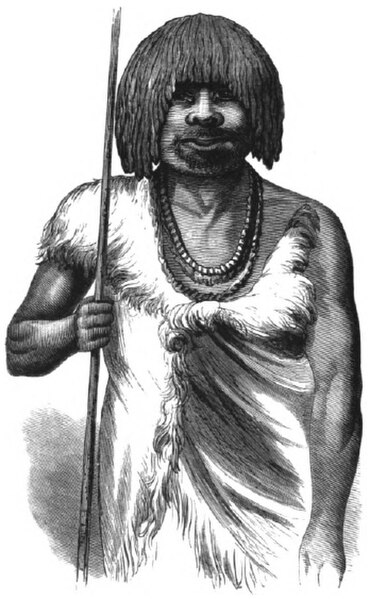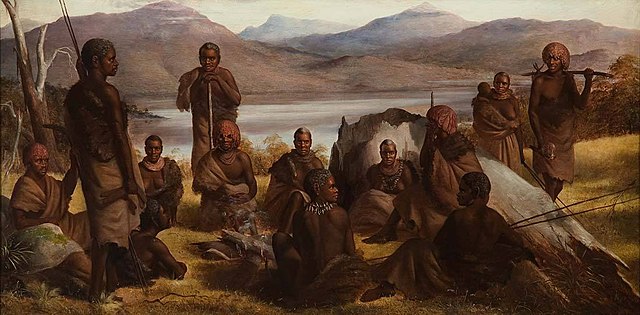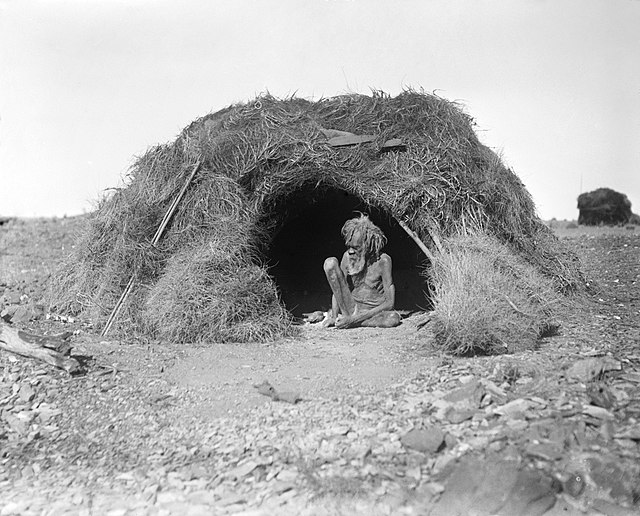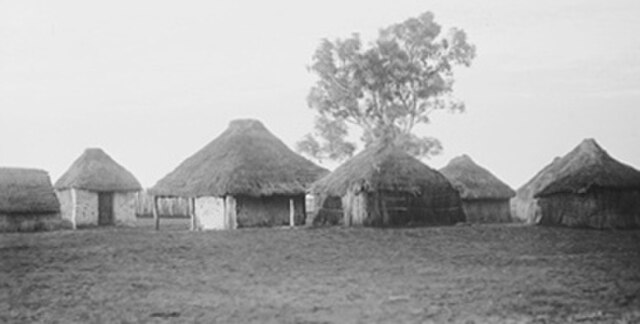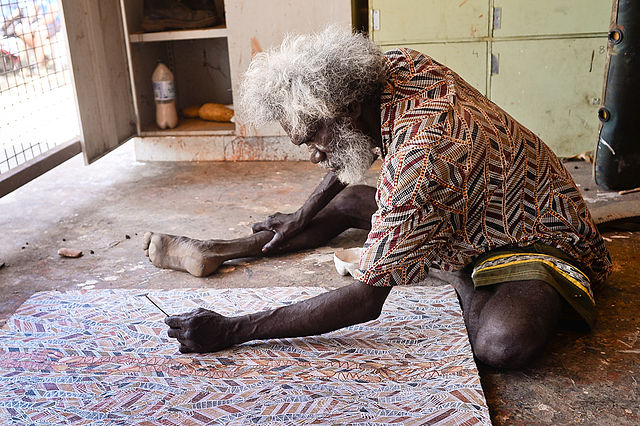The Aboriginal Tasmanians are the Aboriginal people of the Australian island of Tasmania, located south of the mainland. For much of the 20th century, the Tasmanian Aboriginal people were widely, and erroneously, thought of as being an extinct cultural and ethnic group that had been intentionally exterminated by white settlers. Contemporary figures (2016) for the number of people of Tasmanian Aboriginal descent vary according to the criteria used to determine this identity, ranging from 6,000 to over 23,000.
Illustration from The Last of the Tasmanians – Wooreddy, Truganini's husband
A picture of the last four Tasmanian Aboriginal people of solely Aboriginal descent c. 1860s. Truganini, the last to survive, is seated at far right.
Robert Dowling, Group of Natives of Tasmania, 1859. Critic Bernard William Smith assessed the work as a "history painting in the full sense of the word", with the natives "seated – emblematic of their situation – around the dying embers of a burnt-out log near a great blackened stump, and in the far left corner there is a leafless tree with shattered branches."
Proclamation (c. 1828–30) by Sir George Arthur to Aboriginal Tasmanians, claiming that they would receive equal treatment before the law.
Aboriginal Australians are the various Indigenous peoples of the Australian mainland and many of its islands, excluding the ethnically distinct people of the Torres Strait Islands.
An Eastern Arrernte man of the Arltunga district, Northern Territory, in 1923. His hut is decked with porcupine grass.
Dwellings accommodating Aboriginal families at Hermannsburg Mission, Northern Territory, 1923
Arnhem Land Aboriginal dancers in 1981
Arnhem Land artist Glen Namundja painting at Injalak Arts

